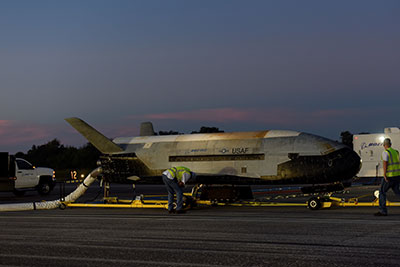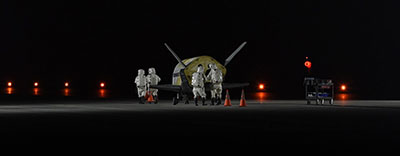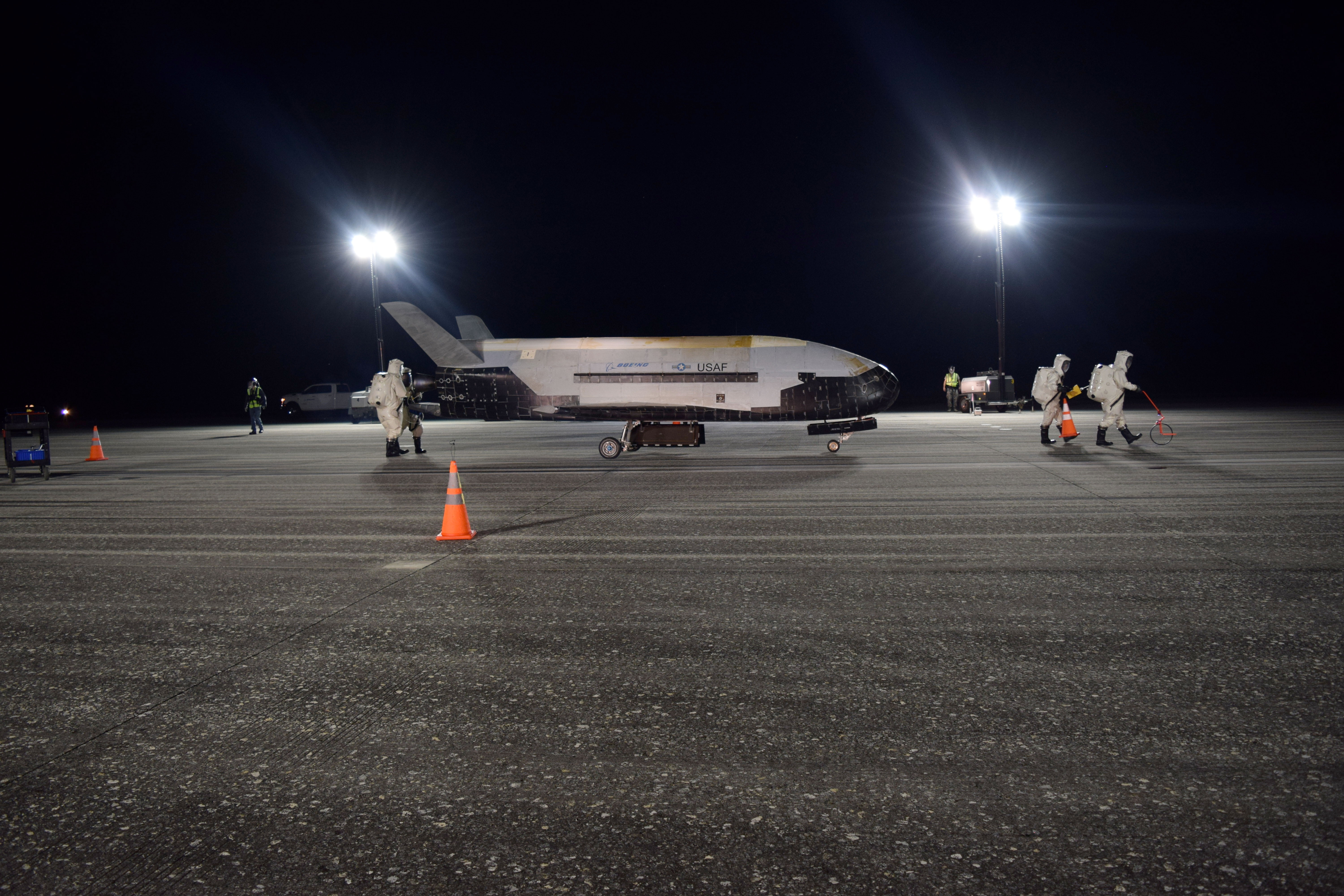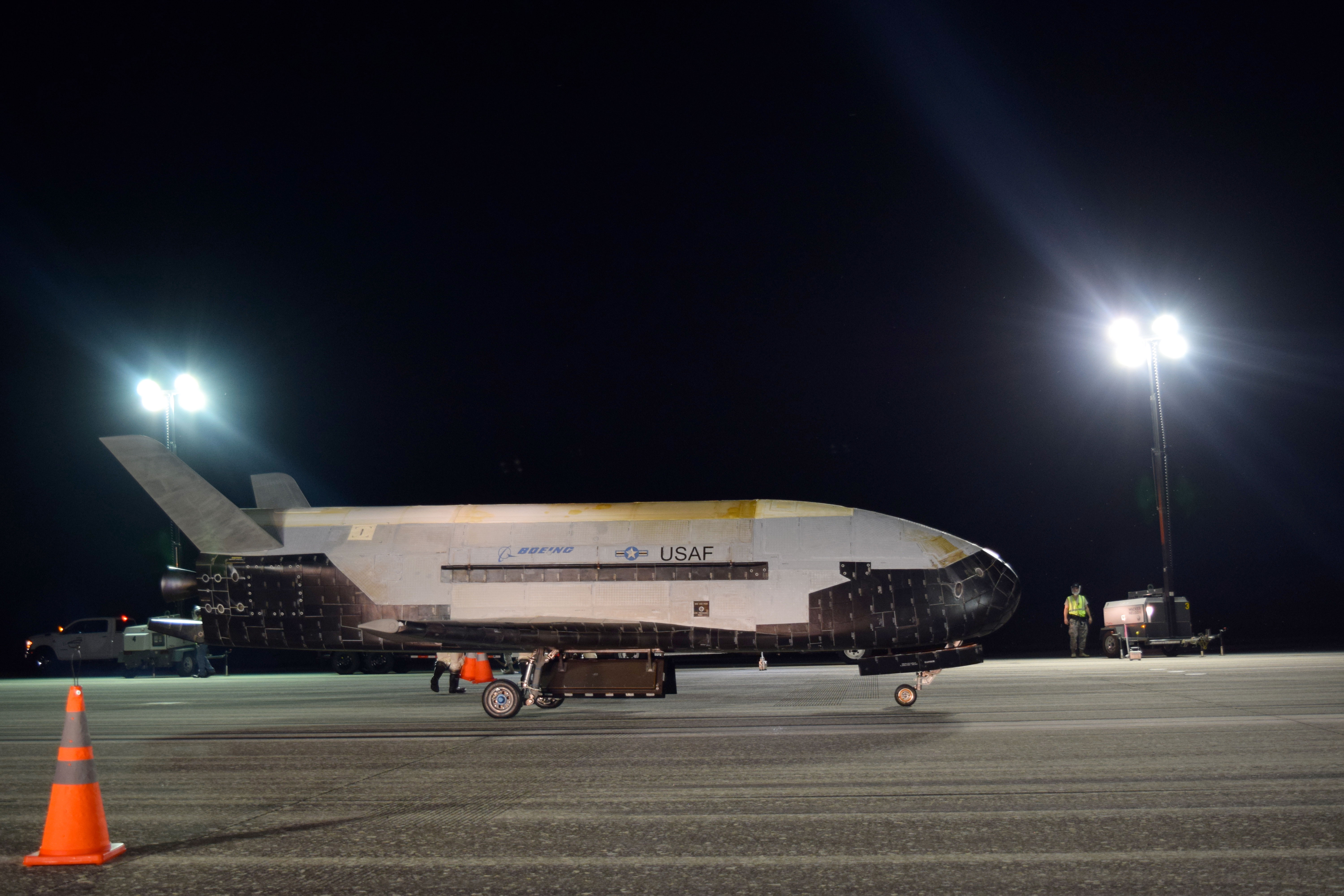 Space News space history and artifacts articles Messages space history discussion forums Sightings worldwide astronaut appearances Resources selected space history documents |
If you have previously registered, but forgotten your password, click here.
| ||||||||
| Robert Pearlman | U.S. Air Force release 45th Space Wing launched 5th Orbital Test Vehicle Mission | |||||||
| Constellation One | Sure would have loved to see deployment! I guess it will be a long time before that happens. | |||||||
| SpaceCadet1983 | Has anyone seen any new information regarding attempts to track OTV-5? I know it's a long shot after some 200+ days in orbit, but I'd like to know if anyone's heard anything. Thanks! | |||||||
| mikej | From Live Science, How a Guy in the Netherlands Spotted the Top Secret X-37B Space Plane A skywatcher in the Netherlands was lucky enough to be in the right place at the right time to see the U.S. Air Force's supersecret X-37B space plane on April 11, or that's the likeliest identity of the bright moving spot in the sky anyway. | |||||||
| Robert Pearlman | At 6:43 a.m. EDT on Monday (Aug. 26), the OTV-5 X-37B broke a new spaceflight record, surpassing the 717 days, 20 hours and 42 minutes its predecessor spent in orbit, reports MIT Technology Review. | |||||||
| Robert Pearlman | U.S. Air Force release X-37B breaks record, lands after 780 days in orbit  | |||||||
| SpaceCadet1983 | Looks like they used the second OTV on back-to-back missions judging from the photographs. | |||||||
| ManInSpace | An interesting perspective on this mission/vehicle from Dr. Morris Jones: This time, it's different. Admittedly, we still have photos of the spacecraft after landing, but they are far more restricted than ever before. The US Air Force Web site and an affiliated site contain just two images of the latest landing. No video of the landing has been released, either, which is also a departure from earlier trends. | |||||||
| ManInSpace | An update from Dr. Jones: The USAF has now released a partial view of the X-37B's backside. But even so, it's still not the full rear view we would like to see. The back panel is partially obscured by two people in hazardous environment suits, clearly tending to the vehicle.  | |||||||
| Jim Behling | They prevent us from seeing part of the area where a mounting bracket or target could be located...That is nonsense. There is only room for the thruster, AC inlet and attach points to the LV adapter. | |||||||


